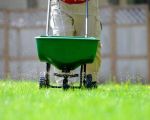
- Understanding Different Grass Seed Types
- Factors to Consider When Choosing Grass Seed
- Step-by-Step Guide to Selecting the Best Seed
- Real-Life Example from a Lawn Owner
- Professional Recommendations and Services
1. Understanding Different Grass Seed Types
Choosing the right grass seed for your lawn begins with understanding the types of grass available. Not all grass seeds are created equal, and their suitability depends on your climate, soil, and lawn use. Broadly, grass seeds are classified into cool-season and warm-season grasses.
Cool-Season Grasses
Cool-season grasses such as Kentucky bluegrass, perennial ryegrass, and fescues thrive in regions with cold winters and moderate summers. These grasses stay green longer in cooler temperatures and recover well from damage. If you live in northern climates, these are often the best choices.
Warm-Season Grasses
Warm-season grasses like Bermuda grass, zoysia, and centipede grass perform well in hot, humid areas. They establish quickly and are drought-resistant but go dormant and brown during colder months. Southern states typically favor warm-season varieties.
Hybrid and Specialty Seeds
There are also hybrid seeds and blends designed to combine the strengths of different types, improving disease resistance, shade tolerance, and durability. Understanding these nuances helps tailor your choice to your lawn’s specific needs.
2. Factors to Consider When Choosing Grass Seed
After identifying the seed types, several critical factors influence the decision to pick the right grass seed for your lawn:
Climate and Regional Conditions
Grass seeds must match your regional climate. For example, planting a warm-season grass in a cold area can lead to poor growth and dead patches. Researching your USDA Hardiness Zone or consulting local lawn care experts can guide the selection.
Soil Type and Quality
Different grasses prefer different soil types—whether sandy, clayey, or loamy. Testing your soil’s pH and nutrient levels is essential to pick seeds that will thrive and to know what amendments your soil may require.
Sunlight Availability
The amount of sunlight your lawn receives daily impacts seed choice. Some grasses, like fescues, tolerate shade well, while others, such as Bermuda grass, need full sun for optimal growth. Analyzing sun patterns in your yard will help avoid poor establishment.
Intended Use and Maintenance
Consider how the lawn will be used. Lawns subject to heavy foot traffic require durable, wear-resistant grasses. Additionally, your willingness and ability to maintain the lawn (watering, mowing, fertilizing) influence seed choice. Low-maintenance grasses suit busy homeowners.
3. Step-by-Step Guide to Selecting the Best Seed
Choosing grass seed isn’t just about picking a bag off the shelf. Follow these steps for a thoughtful approach:
Step 1: Assess Your Lawn’s Conditions
Walk around your yard to note sun exposure, shade, soil type, and existing grass or bare spots. Take pictures or make notes to help clarify what your lawn needs.
Step 2: Match Seed to Environment
Using the factors mentioned above, shortlist grass seed types that thrive in your climate and soil. Pay attention to seed blend labels that specify sun or shade tolerance and disease resistance.
Step 3: Decide on Seed Quality and Quantity
High-quality seed generally means better germination rates and healthier lawns. Don’t skimp on quality. Calculate how much seed you need based on your lawn’s size to avoid running short or wasting product.
Step 4: Prepare Your Lawn Properly
Before sowing seed, prepare the soil by removing debris, aerating if needed, and applying starter fertilizer. This ensures the seeds get a strong start.
Step 5: Plant and Care
Follow recommended seeding rates and watering schedules. Early morning watering encourages deep root growth. Be patient—some grasses take longer to germinate than others.
4. Real-Life Example from a Lawn Owner
Jessica, a homeowner in the Midwest, struggled with patchy, thin grass every summer. She initially planted a warm-season grass, attracted by its drought resistance, but her lawn turned brown and patchy in early fall. After consulting with lawn care professionals and studying her local conditions, she switched to a blend of Kentucky bluegrass and fine fescue, better suited for her cooler climate and partial shade areas. This choice transformed her lawn into a lush, green space year-round, dramatically improving her outdoor living experience.
This case highlights the importance of aligning grass seed selection with environmental realities rather than convenience or trends.
5. Professional Recommendations and Services
While choosing grass seed may seem straightforward, expert advice can make a significant difference. Lawn Care Services provides comprehensive guidance tailored to your specific lawn needs. From soil testing to seed selection and aftercare, professional help ensures the best results, saving time and avoiding costly mistakes.
Visiting Lawn Care Services can connect you with trusted seed brands, expert tips, and personalized lawn care plans designed to deliver the healthiest, most beautiful lawn possible.








